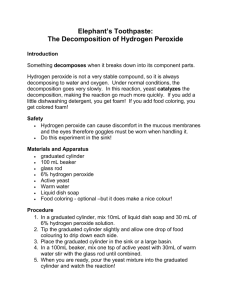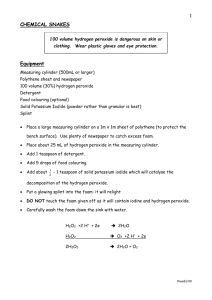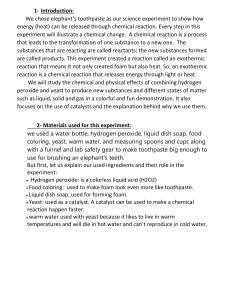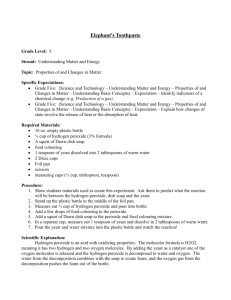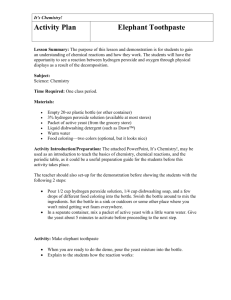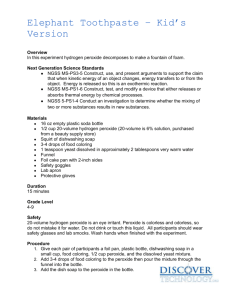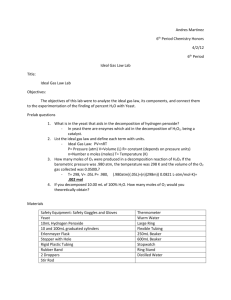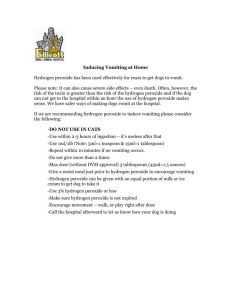The Decomposition of Hydrogen Peroxide
advertisement
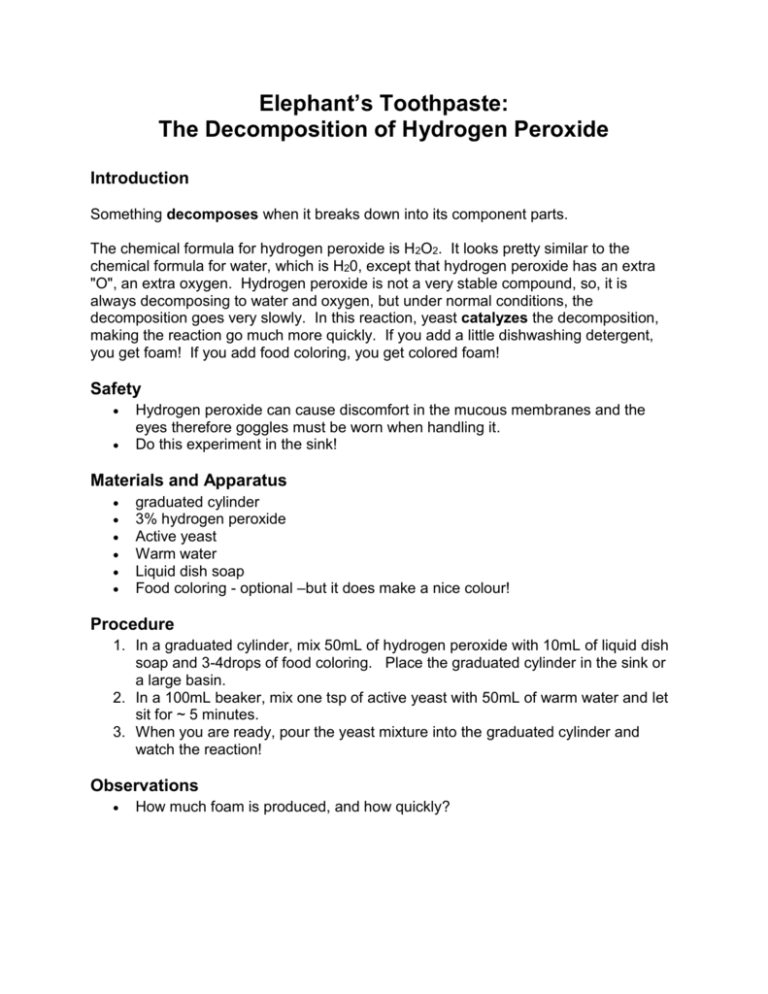
Elephant’s Toothpaste: The Decomposition of Hydrogen Peroxide Introduction Something decomposes when it breaks down into its component parts. The chemical formula for hydrogen peroxide is H2O2. It looks pretty similar to the chemical formula for water, which is H20, except that hydrogen peroxide has an extra "O", an extra oxygen. Hydrogen peroxide is not a very stable compound, so, it is always decomposing to water and oxygen, but under normal conditions, the decomposition goes very slowly. In this reaction, yeast catalyzes the decomposition, making the reaction go much more quickly. If you add a little dishwashing detergent, you get foam! If you add food coloring, you get colored foam! Safety Hydrogen peroxide can cause discomfort in the mucous membranes and the eyes therefore goggles must be worn when handling it. Do this experiment in the sink! Materials and Apparatus graduated cylinder 3% hydrogen peroxide Active yeast Warm water Liquid dish soap Food coloring - optional –but it does make a nice colour! Procedure 1. In a graduated cylinder, mix 50mL of hydrogen peroxide with 10mL of liquid dish soap and 3-4drops of food coloring. Place the graduated cylinder in the sink or a large basin. 2. In a 100mL beaker, mix one tsp of active yeast with 50mL of warm water and let sit for ~ 5 minutes. 3. When you are ready, pour the yeast mixture into the graduated cylinder and watch the reaction! Observations How much foam is produced, and how quickly? Analysis 1. Does it matter if you use lukewarm water or cold water to activate the yeast? 2. What do you predict would happen if you added more or less soap? What's Happening?!? Hydrogen peroxide (H2O2) decomposes into water and oxygen gas, but normally the reaction is so slow as to be imperceptible. 2H2O2(aq) 2H2O(l) + O2(g) What happens when you pour hydrogen peroxide onto a cut? It bubbles! That's because there is something in your bodily fluids that catalyzes the decomposition. A catalyst is a substance that speeds up a reaction, without being consumed itself. In this experiment we used a 3% hydrogen peroxide solution. The production of oxygen gas is made more noticeable by adding some dish soap, which makes the foam. The reaction is catalyzed by the active yeast added to the container. The yeast changes the mechanism, or pathway, by which the reaction occurs. The rapid production of bubbles of oxygen gas, along with the dish soap, quickly creates a large quantity of foam.

